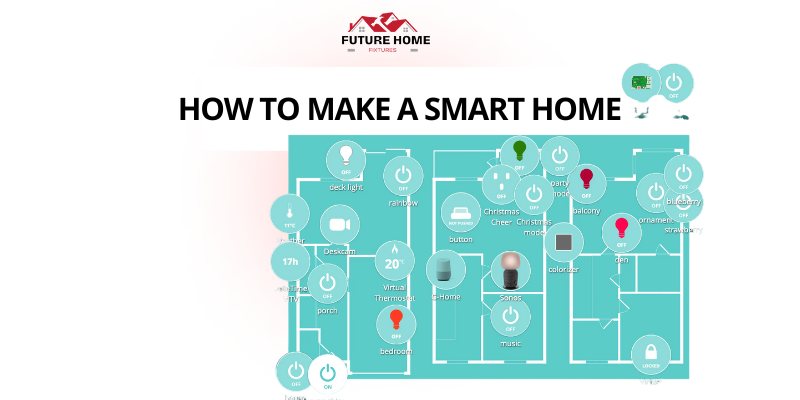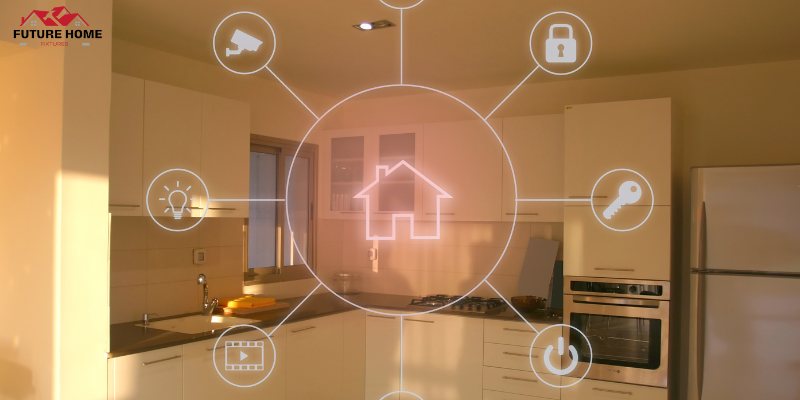Creating a smart home is an exciting way to bring convenience, efficiency, and security into your living space. If you’ve been wondering how to make a smart home, this comprehensive guide will walk you through every step, from planning to installation and beyond. By integrating internet-connected devices, you can automate tasks like controlling lights, adjusting the thermostat, or monitoring security—all from your smartphone or voice commands.
What Is a Smart Home?
A smart home uses connected devices to allow remote control and automation of everyday functions. Whether you want to save energy, enhance security, or simply enjoy hands-free convenience, learning how to make a smart home starts with understanding your goals and the tools available.

How to make a Smart Home
Step 1: Plan Your Smart Home Setup
Before you begin, take time to plan. Ask yourself:
- What do I want from my smart home? Energy savings, better security, or easier daily routines?
- Which areas should I automate first—lighting, climate control, or locks?
What’s my budget for smart devices?
Planning is key to mastering how to make a smart home that fits your lifestyle. Start small if you’re new to this, and scale up as you go.
Step 2: Choose a Central Hub
A central hub is the brain of your smart home, connecting all your devices. Popular options include:
- Amazon Echo: Works with Alexa for voice control.
- Google Home: Integrates with Google Assistant.
- Apple HomeKit: Ideal for Apple users.
Samsung SmartThings: Supports a wide range of devices.
When figuring out how to make a smart home, ensure your hub is compatible with the devices you plan to use. This prevents headaches down the road.
Step 3: Build a Strong Network
Your smart home relies on a solid Wi-Fi network. Here’s how to set it up:
- Ensure Full Coverage: Use a mesh Wi-Fi system (like Google Nest Wi-Fi) for larger homes.
- Secure Your Network: Set a strong password and enable encryption to protect your devices.
- A reliable network is a foundational step in learning how to make a smart home that runs smoothly.

Step 4: Pick and Install Smart Devices
Now, choose the devices that match your goals. Some popular options include:
- Smart Lights: Philips Hue or LIFX for customizable lighting.
- Smart Thermostats: Nest or Ecobee to manage heating and cooling.
- Smart Locks: August or Yale for keyless entry.
- Smart Cameras: Arlo or Ring for home monitoring.
To install, follow each device’s instructions—usually a mix of physical setup and connecting to your Wi-Fi. Then, link them to your hub using its app. This hands-on process is central to understanding how to make a smart home work for you.
Step 5: Configure Automation and Controls
Once your devices are installed, set up automations to make your home truly “smart.” Examples include:
- Turning lights on at dusk.
- Adjusting the thermostat when you’re away.
- Locking doors at a set time.
Add voice control if your hub supports it (e.g., “Alexa, turn off the lights”). Test everything to ensure it works. This step is where how to make a smart home shifts from setup to daily convenience.
Step 6: Expand and Maintain Your System
- Start Small: Begin with a few devices, like a smart speaker and lights, then add more.
- Update Regularly: Keep firmware and apps current for security and new features.
- Troubleshoot Issues: Check manufacturer support if something goes wrong.
Expanding gradually is a practical tip for anyone learning how to make a smart home over time.
Step 7: Prioritize Privacy and Security
Smart devices collect data, so take precautions:
- Choose Trusted Brands: Stick to companies with strong privacy policies.
- Understand Data Use: Know what’s being collected (e.g., camera footage) and how it’s stored.
- Boost Security: Use unique passwords and enable two-factor authentication.
- Security is a critical aspect of how to make a smart home that’s safe and reliable.
Bonus Tips for Success
- Ensure all devices work with your hub to avoid issues.
- Pick devices that blend with your home’s look.
- You don’t need to automate everything at once.
Mastering how to make a smart home offers benefits like energy savings, enhanced security, and unmatched convenience. Imagine arriving home to lights that turn on automatically or a thermostat that adjusts itself to save power. With the right setup, these perks are within reach.
Building a smart home doesn’t have to be overwhelming. By planning carefully, choosing compatible devices, and setting up a secure network, you’ll be well on your way to creating a space that’s both modern and functional. Now that you know how to make a smart home, start with one device and watch your home transform into a smarter, more connected space.
Check it out now at Future Home Fixtures!














